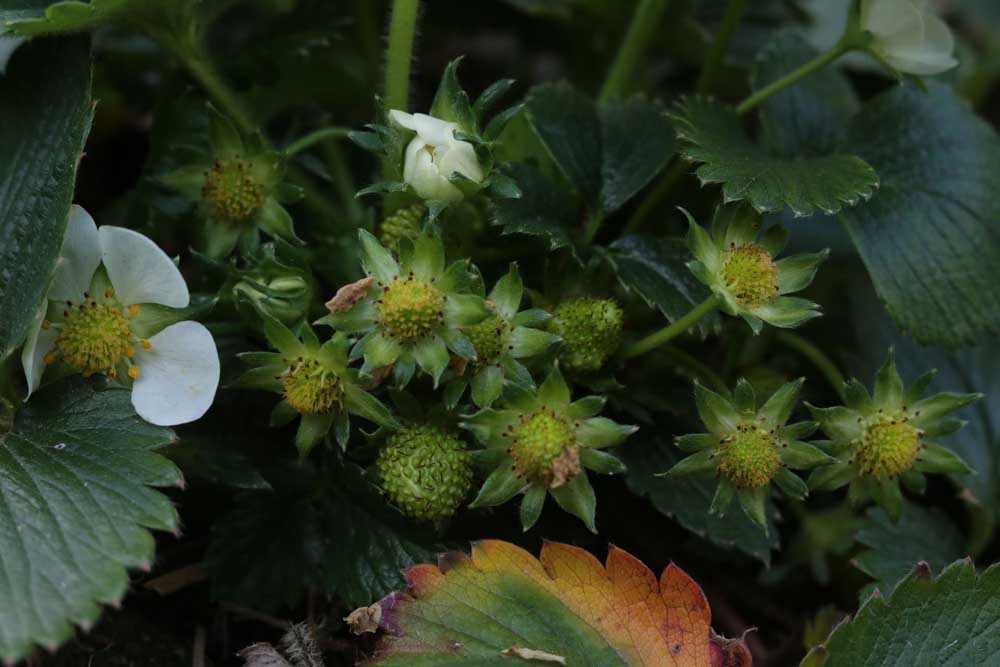Gardening hard work with reward
Published 3:29 pm Thursday, March 4, 2021

- While Mary Hamlin preferably grows vegetables in her garden she also has strawberries starting to grow in the flower beds.
Master gardeners don’t hesitate to tell the dirt on their passion.
“The thing that we say right off is first of all, you should enjoy this,” said Mary Hamlin, a Tyler resident and Smith County Master Gardener. Gardening is an investment of time, effort and money — with a reward at the end.
“The reward is delicious fresh food — safe fresh food. You know where it’s been and how it’s been handled.”
Getting to that reward, though, takes preparation. Here are some tips from Hamlin and Gregg County Extension Agent Shaniqua D. Davis for having a successful garden.
Fertilize
“The key is there’s no substitution for good prep work, for getting your ground work done, and then you need to use the right kind of fertilizer,” Hamlin said. The fertilizer should have nitrogen, phosphorous and potassium, and micronutrients such as zinc, manganese and boron.
Earth, water and sun
Plan to control water so the ground doesn’t get too wet or too dry, and prepare the dirt with “lots of organic material,” Hamlin said. It’s best to water at the roots. Mulch will help with water conservation and temperature control, but a handout Hamlin uses in gardening presentations she makes says pine needles work best. Vegetables generally needs six hours of sun for fruiting plants, possibly five for greens.
Davis cautioned that raised bed potting soil is porous so care needs to be taken to provide enough water.
“Check your plants daily for any sign of insects and worms. One tomato worm can strip the leaves off a plant right before your very eyes. Raised beds help control some types of insects as they do not want to climb up the boards,” Davis said. “If insects become a problem, plant Marigolds in the garden. Insects do not like the smell of these and the pretty color will make a great addition to your garden.”
Don’t procrastinate
Also, don’t wait too late to get plants in the ground. In fact, they should be in the ground already, Hamlin said.
“Summers here are hard on everything, of course,” she said. “One of the things people need to understand is they need to get (plants) in as early as reasonable.”
Pick vegetables when they’re young for best flavor and nutrition. Tomatoes should be picked when they’re pink. Let them ripen indoors.
It’s OK to think small
Hamlin said she has a small yard.
“I vegetable garden in my flower beds,” she said. “You’d be amazed at how much you can get out of reasonably small flower beds.”
Again, though, it comes down to preparation — making a plan to get the most out of a small space.
Davis recommends using raised beds with raised bed garden soil and compost.
“When making raised beds, purchase three, 2 x 10 x 8 foot treated boards to make one bed. Cut one board in half to make the 4 foot ends. Use wood screws to put this together,” Davis said. “To prevent weeds and grass from growing from the ground up through your soil, place a thick layer of cardboard on the ground where you are making your bed. This prevents any grass and weeds from coming up from the ground into your beds. The cardboard will eventually decay but the weed and grass seeds have been killed. You will need to have at least 2 inches of cardboard left out around the edges of your bed to prevent bermuda grass and other weeds, etc. from growing up the inside edges of the soil. Place your newly built bed on top of the cardboard.”
Make wise choices
Grow vegetables you like. That’s one of the tips in Hamlin’s handout. She also said tomatoes are best planted as seedlings, when they’re about 2 inches tall, because they’re hard to start from seeds. Beans and okra, though, should be sowed directly into the ground.
Hamlin urges caution when using insecticides, since the point is to eat what you grow. She suggested Sevin, pyrethrins and water blasts.
Davis said plants that are pale or yellow can be fertilized with a small amount of 13-by-13-by-13 fertilizer.
“Liquid Miracle Grow can also be used as needed. Each year after you start your beds you need to add more compost and a small amount of fertilizer to keep the soil loose and fertile,” Davis said.
When in doubt
Visit https://aggie-horticulture.tamu.edu/publications/veg_variety/ to get information about what vegetables grow best in each area of the state.
Smith County Master Gardeners also operate a help desk at smithmghelpdesk@gmail.com.







